 |
The rod of Jesus
Christ, Aish-Muquam, Kashmir |
 |
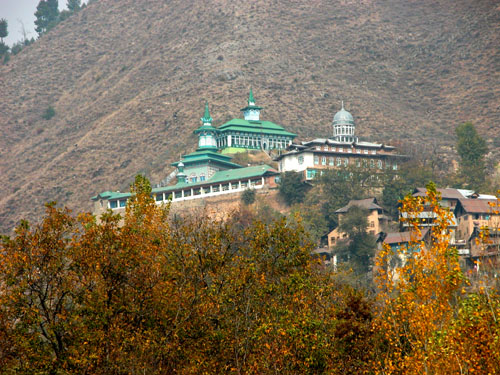
The holy shrine of the Islamic saint Zainuddin Wali at Aish-Muquam
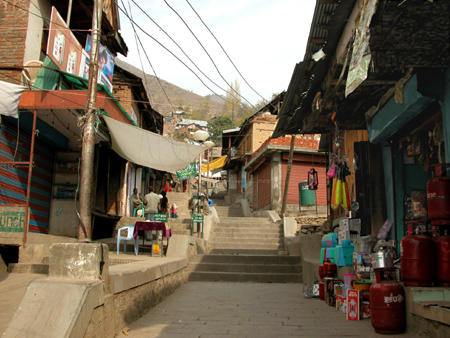
Several steps lead up to this highly revered shrine of the Islamic saint
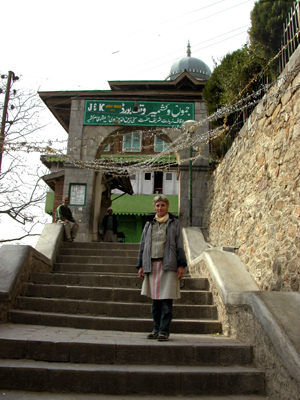
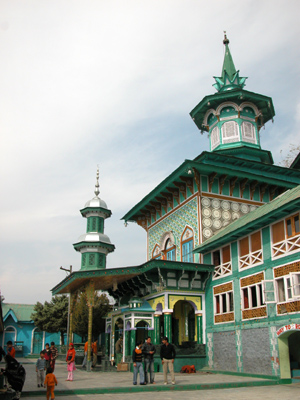
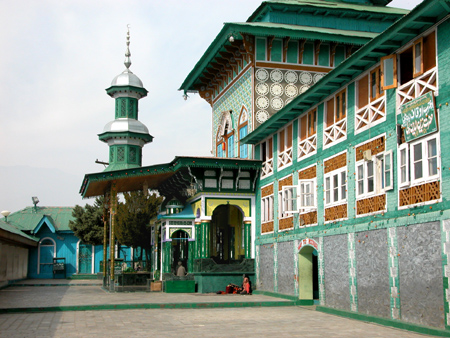
The main entrance to the cave and in the background:
The relique room
The relic room
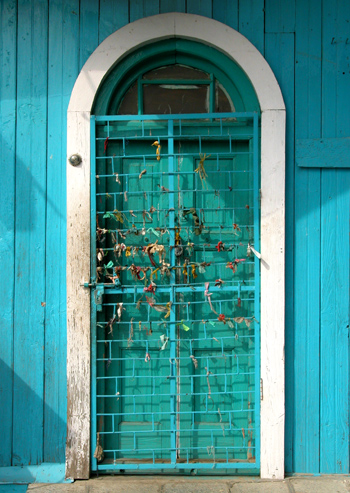
Entrance to the relic room
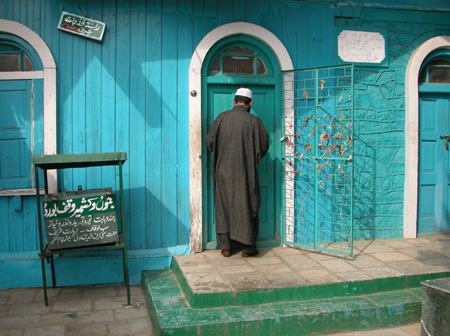
Luckily the head Imam was present that day ...
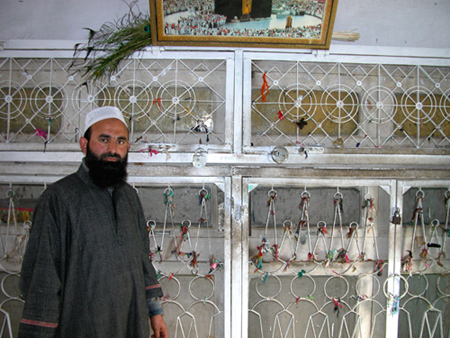
The head Imam of Aish-Muquam shows the wall
where the rod of Jesus (and Moses)
is kept in the upper lockers
|
The staff or rod of saint Zainuddin Wali |
The most prized possesion of saint Zainuddin Wali, who lived in the
1400th century AD, was a staff which had been given to him by Sheikh
Noor Din Wali. The staff is still in the Reliq room and is considered
the most valuable relic.
When the people of the region percieves themselves to be under an
emergency, like an epedemic, famine etc., they make a pilgrimage to
Aish-Muquam, confident of being helped by the miraculous powers of the
staff. |
|
The rod of Jesus
Christ and Moses ? |
The darkbrown staff is 2,3m long and 25mm thick. It is made of olive
wood and is also known as the "Rod of Moses" and "The rod of Jesus".
It is believed that the staff first belonged to Moses (lived 1600 BC),
who used it when he made his way to Kashmir.
Later it was used by Jesus as a symbol of his Mosaic heritage.
The staff was formely kept in the Khangahi Muhalla quarter of Srinagar,
before it was brought in safety into the relic room at the holy site of Aish-Muquam. |
|
The rod today |
The present Imam has been head of the mausolaeum for 6 years (Oct. 2007).
He has not yet seen the rod, as this precious relique has not been seen by
anyone for 12
years, 1995. It is only brought out on permission from the government and only during
calamities threatening the population in the area. |
|

The rod of Christ &
Moses? - the only existing photo
|
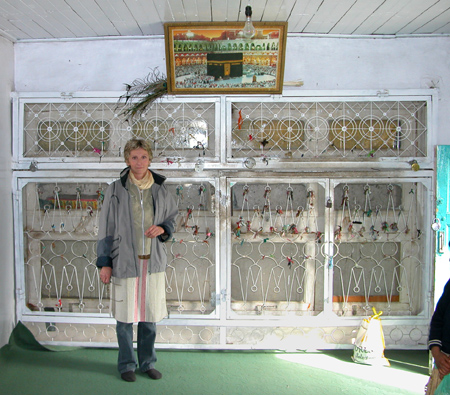
The entire wall behind which the 2,3m long rod is placed.
Other relics
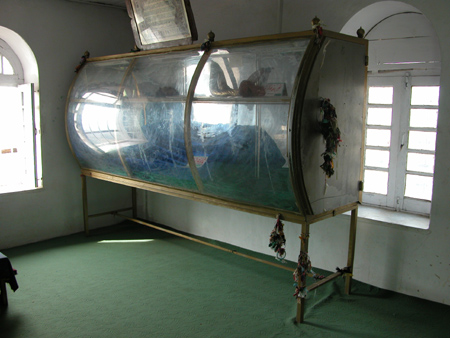
Montre with the remains of saint Zainuddin Wali
|
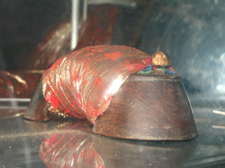
The shoe of saint Zainuddin Wali |
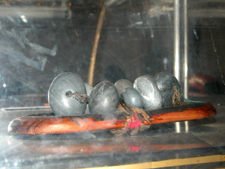
Prayer stones |
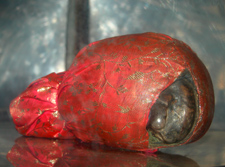
A mumified dogshead |
The saintly burial cave
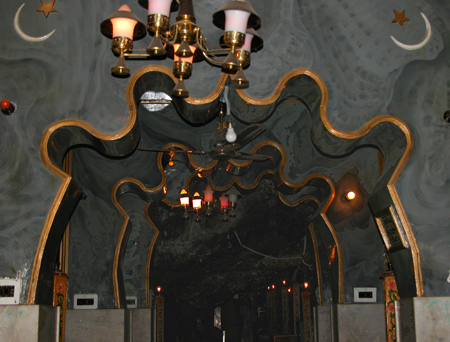
The 12m long hall way into the mountain cave.
|
The cave at Aish-Muquam |
The cave at Aish-Muquam extends aproximately 12 m into the mountainside
and above this cave a magnificient shrine has been erected.
The building contains the reliquary of Zainuddin Wali, an Islamic saint,
who lived in the cave during the rule of Sultan Zainul Abidin Badshah
(1408-61). |
|
The "resting place" of Jesus Christ? |
|
Tradition says that Jesus have been at this place. The name Aish-Muquam refers
to Jesus. "Aish" is said to derive from Isha or Issa (the Islamic name for
Jesus) and "Muquam" means "place of rest or repose". This suggests that Jesus
might have withdrawn to this isolated cave for rest and contemplation. |
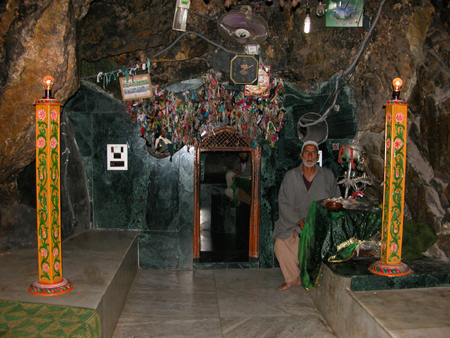
The second entrance.
Third entrance to the actual cave is inside the next room to the left.
The hight of the entrance to the actual cave is barely 1m.
Inside the cave
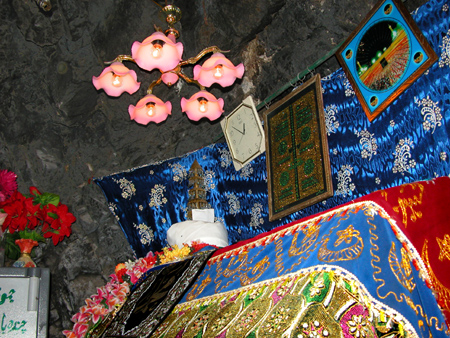
The remains of Zainuddin Wali, an Islamic saint, is buried here.
Zainuddin Wali lived in the cave during the rule of
Sultan Zainul Abidin Badshah
(1408-61).
Did Jesus Christ also withdraw into in this cave for rest and contemplation?
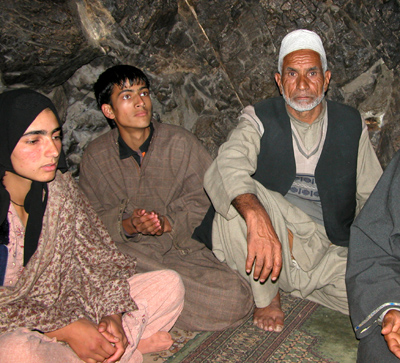 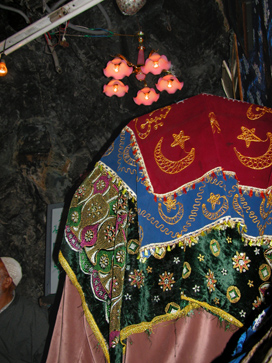
Inside the cave is a prayerful atmosphere.
The Muslim saint resting here is highly revered by the many pilgrims,
who travels over long distances to visit this holy shrine.
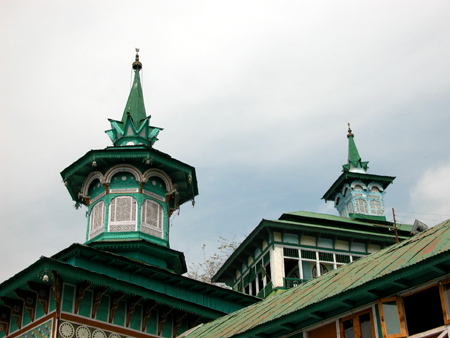
The towers of Aish-Muquam.
The small tower is situated above the shrine
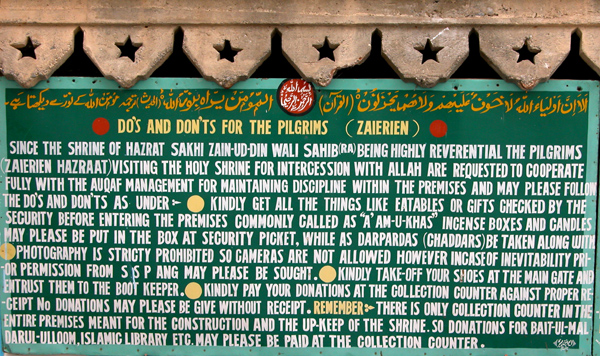
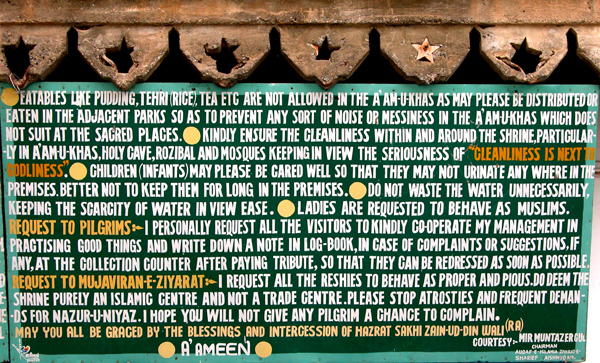
Rules and advice for pilgrims
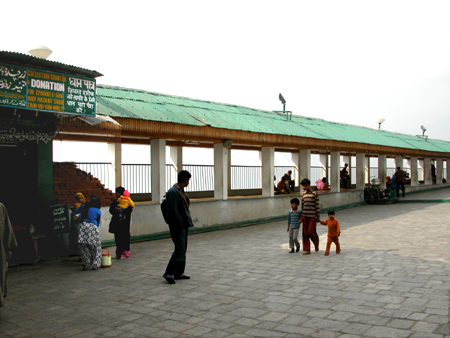
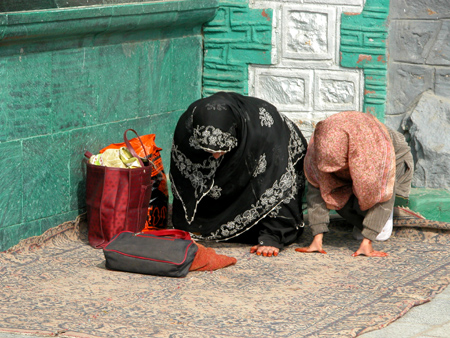
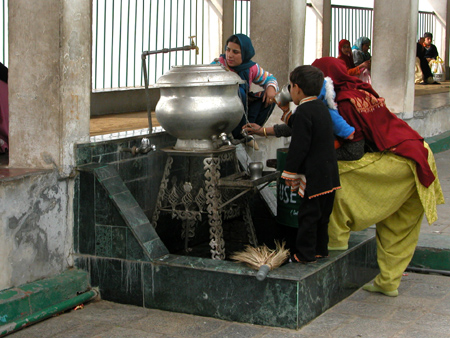

Pilgrim life in the courtyard of the highly revered mausolaeum
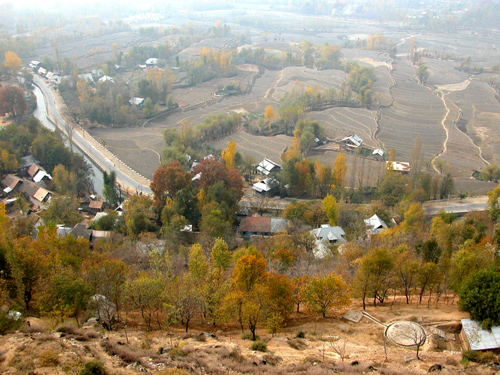
Wiev from the courtyard
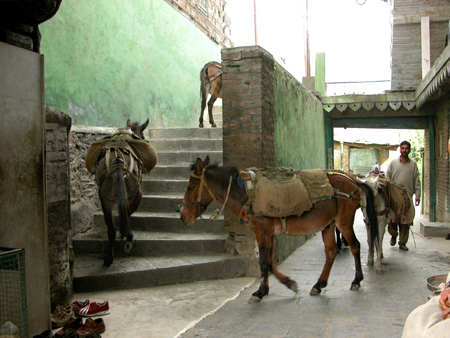
The "eternal donkeys" on their way to pastures
above the mausolaeum,
like at the time of Moses and Christ?
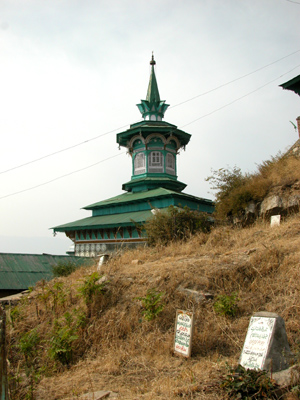
Backside weiv of the small tower over the shrine
with burial grounds at the mountain slope
|
Faith and/or facts? |
| The pages on this website about Christ in Kashmir
are based upon the assumption, that Jesus survived the crucifixtion.
Fleeing from His grave, Jesus went in hiding from the Romans and other
persecuters outside
Jerusalem.
After recovering from His wounds, He travelled incognito, perhaps even
under a another name, with caravans along the "Silk Road", the ancient
trade route from Europe to the far east. Yuz Azaf or Jesus Christ arrived in Kashmir aproximately year 60AD. He
stayed in Kashmir,
where many other Israelites lived. Ten of the twelve tribes of Israel had migrated
to this "Promised Land", in the 6th century BC, ie. long time before
Jesus' birth.
Jesus came because he was the Messiah of the Israelittes, and he had, in
clear words, declared that he was sent to serve the lost sheep in the
house of Israel.
After year 80AD he was entombed in Srinagar.
These assumptions is based on several scriptures: The apocryphal texts and
non-canonized gospels found in Qumran, Israel and Nag Hamadi, Egypt,
scriptures found in Tibetan monestaries, historians over the centuries,
inscriptions in temples and at the Rozabal Mausolaeum, the Sanskrit
texts Bahavishya Maha Purana and Rajatarangini, Persian texts and last but not the least: The age old oral tradition from the different parts of India
and other countries, where Jesus is supposed to have been. Where the
local people long time ago had seen a man, "With fair hair and a face
shining like the sun, who called Himself, the son of God."
Jesus
Christ was an enlightend master without attachments of any kind to
either places, people or things. He was a travelling saint, who spread "The
Word" Himself. The knowledge about "The Kingdom to come", which
is as difficult to understand today, as it was for His closest disciple,
he taught himself. It is
likely and very well documented, that Jesus Himself created the the world
religion, that we know today, by travelling and teaching in most of the known world of
those days.
Faith and belief is challenged, but is lack of faith in
the
historical evidences, not deep down lack of faith in Him?
|
Hassnain, Fida M. A Search for the
Historical Jesus, Gateway Books, U.K., 1994 - ISBN
0946551
99 5
Kashmiri, Aziz,
Christ in Kashmir, Roshni Pubs, Srinagar, 1984
Kersten, Holger,
Jesus Lived in India, Element, Shaftesbury, UK, 1986
Bock, Janet, The Jesus Mystery, Aura Books, Los Angeles, 1980
Hazrat Mirza Ghulam Ahmad of
Qadian, Jesus in India, 1989
Read more about "Jesus in India":
http://en.wikipedia.org/wiki/Jesus_in_India_(book)
The lost Years of Jesus:
http://en.wikipedia.org/wiki/Jesus_in_India#Jesus_in_India
|
|
mukti4u2@gmail.com |
 |
www.mukti4u2.dk |
mukti4u2.dk
►
created by
BP
|